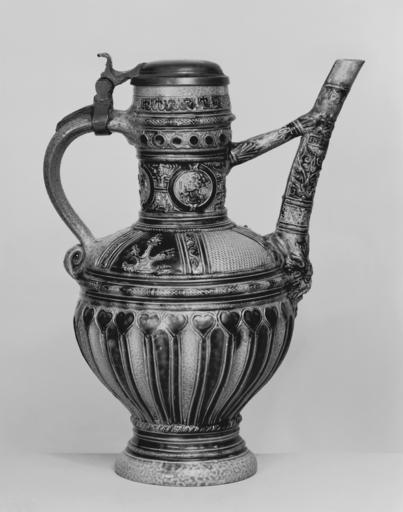MAKE A MEME
View Large Image

| View Original: | German_-_Jug_with_a_Bridge_Spout_-_Walters_482089.jpg (1418x1800) | |||
| Download: | Original | Medium | Small | Thumb |
| Courtesy of: | commons.wikimedia.org | More Like This | ||
| Keywords: German - Jug with a Bridge Spout - Walters 482089.jpg Very structured incised stamped and applied decoration covering nearly the entire vessel is characteristic of later 16th-century stoneware in the Rhineland especially the Westerwald region Horizontal bands around the middle separate vertical stripes at the bottom that imitate the pattern called gadrooning in higher-status contemporary glassware designs imitating Roman glass from divided fields of alternating patterns or motifs above The decorative effect is accentuated by selectively painting cobalt blue oxide on the naturally gray body prior to salt glazing during firing This type is also called a beaked jug or pot a Stegkanne Tüllenkanne in German 1589 Renaissance stoneware with salt glaze and pewter lid cm 25 5 accession number 48 2089 31357 Mr and Mrs Fred Van Slyke date and mode of acquisition unknown Walters Art Museum Gift of Mr and Mrs Fred J van Slyke Jr 1956 Dated 1589 place of origin WesterwaldHöhr-Grenzhausen Germany Walters Art Museum license Renaissance applied arts in the Walters Art Museum German art in the Walters Art Museum Media contributed by the Walters Art Museum needs category review Westerwald Stoneware Salt glazing Jugs bridge-spouted | ||||